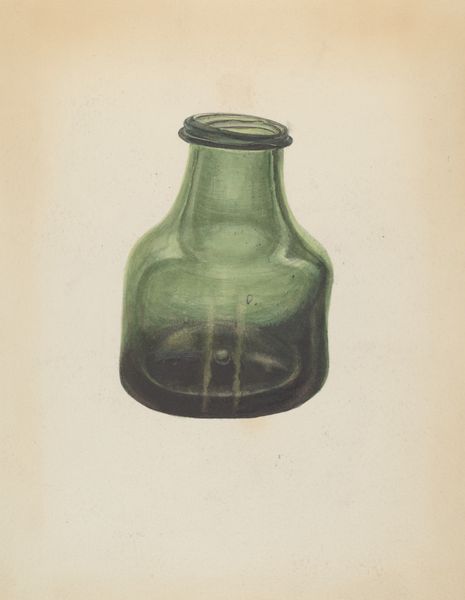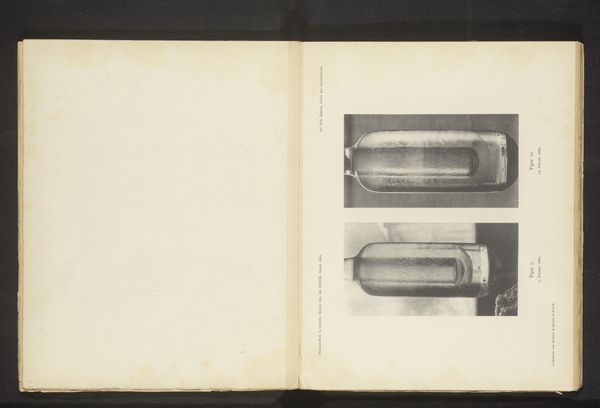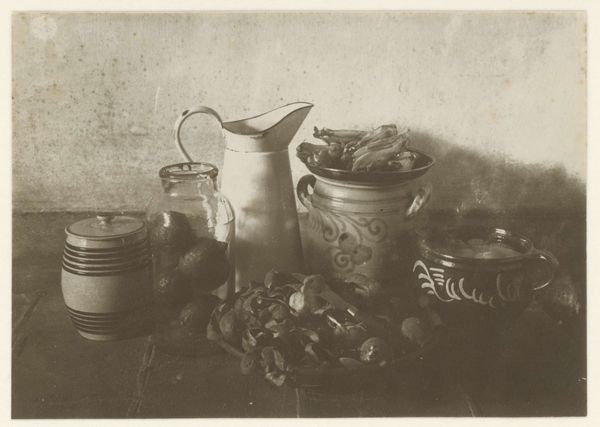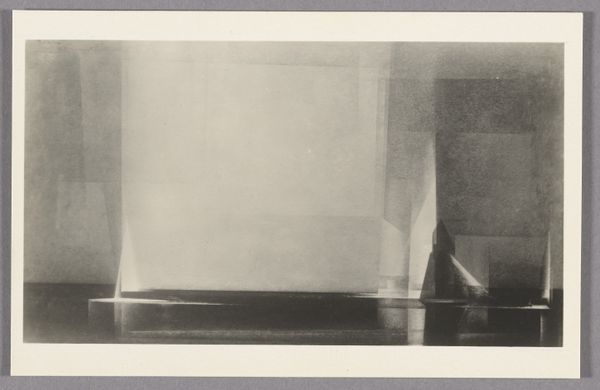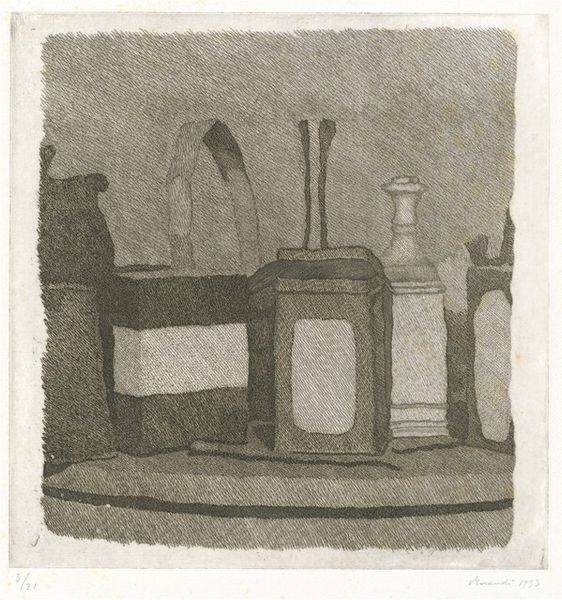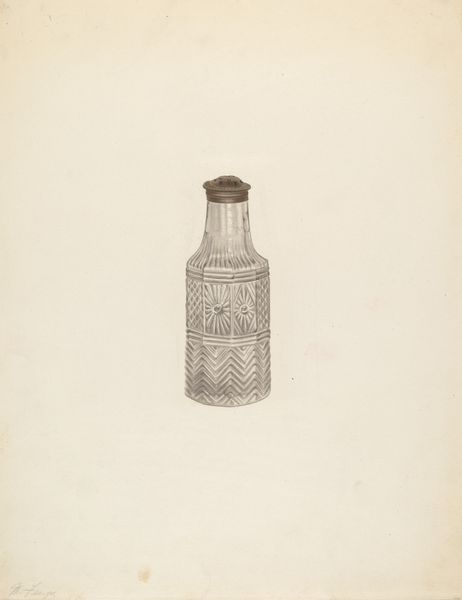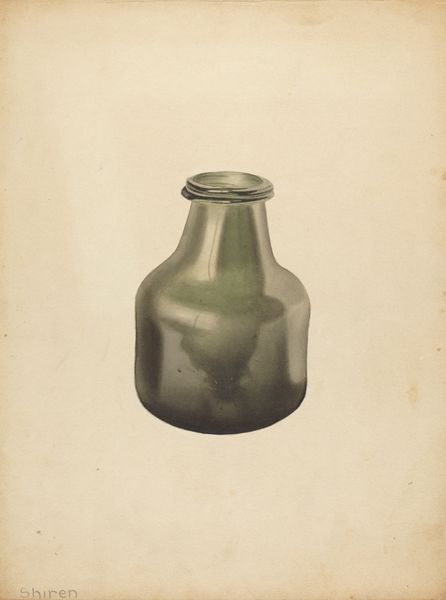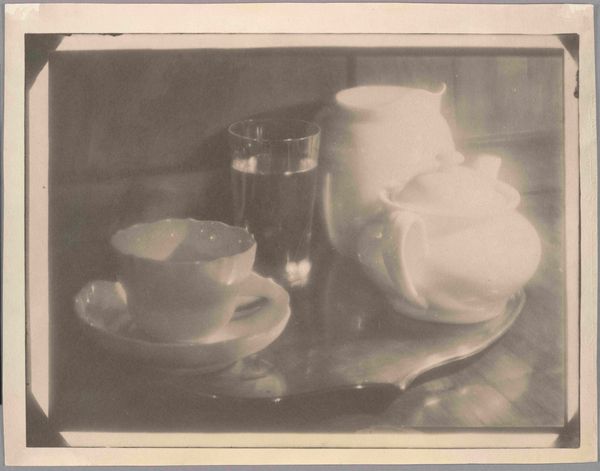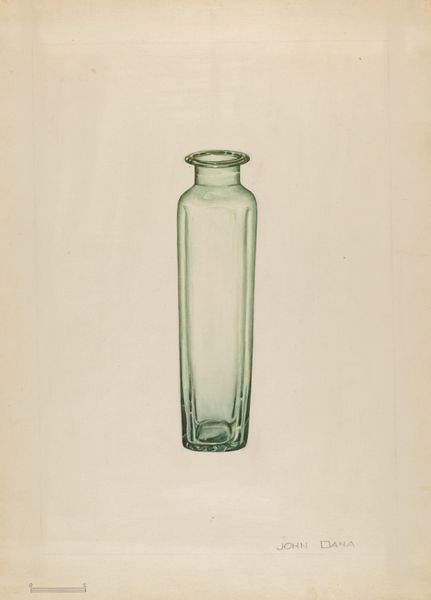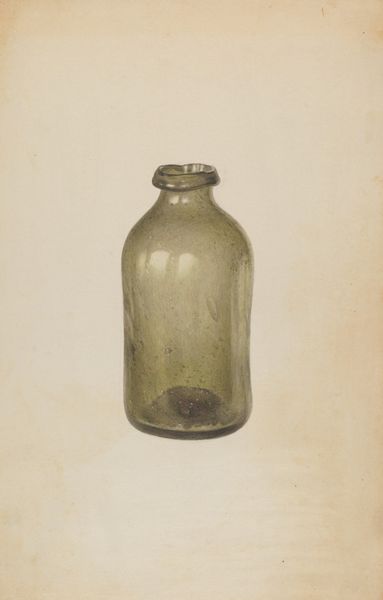
Dimensions: height 279 mm, width 399 mm, height 233 mm, width 306 mm
Copyright: Rijks Museum: Open Domain
Curator: My first thought looking at this photograph, "Stilleven met fles en potten," by Heinrich Kuhn from somewhere between 1900 and 1910, is how surprisingly painterly it is. What strikes you, Editor? Editor: The texture is quite remarkable for a photograph; it's a gelatin silver print, giving it a soft, almost tactile quality. I am also interested in the subjects depicted - bottles, and canning jars - the very ephemera of life depicted in an everyday tableau. It elevates these humble vessels. Curator: Absolutely, and if we look at the placement of these objects – two sealed containers and one open bottle, almost empty, standing on what appears to be a white cloth—what’s implied there? Think of who in this era would have been producing and preserving the victuals and goods stored within such objects. Editor: It speaks to domestic labor, often unseen and undervalued. The process of preserving, the skill, and the gendered associations. It connects this still life deeply into the context of early 20th century labor divisions and material culture. Curator: And considering the turn of the century as a transition in modernity, especially in Europe, who might have consumed the product stored in the canning jars or bottled products? Perhaps individuals and families new to urban centers, without a garden to pick food from. Editor: Very good point! The jars would contain fruits and vegetables destined for a very particular type of consumption - a sign of economic realities reshaped by industrial shifts. And how interesting that he selected them for depiction in art. What a democratization of artistic subject! Curator: Agreed! Even the subdued tones work, the almost monochromatic rendering creating a sense of nostalgia, tinged with both longing and a whisper of loss of tradition and connection to land. Editor: Seeing how Kuhn used the processes available to him, the materials on hand, it speaks volumes about available artistic production methods that challenged previously held categories. I'm also thinking of how these methods changed consumption patterns then and now, how mass produced items create different cultures of desire. Curator: Precisely. This print moves us to think beyond the singular artwork itself. It shows us how class, labor and modes of consumption played significant roles in shaping people’s lived experiences. Editor: I see it also reflecting on its own means of production - how everyday subjects and materials become meaningful sites of memory and identity within this historical moment.
Comments
No comments
Be the first to comment and join the conversation on the ultimate creative platform.
